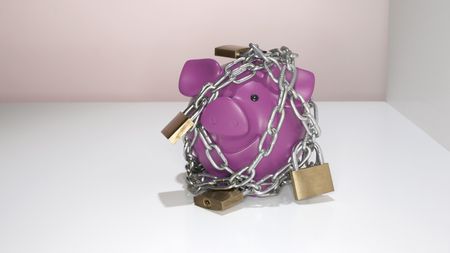Do You See a Market Cliff Approaching? Make the Right Turns Now
If you've been nervous about the stock market lately, you're not alone. However, don't let your nerves lead you to do something you'll regret. How you should react depends on several factors, your age being a big one.


By most measures, 2018 was off to a promising start. Unemployment was down, wages were up, and businesses both large and small were expecting to benefit from tax reforms.
“There has never been a better time to start living the American dream,” President Trump said during his first State of the Union address on Jan. 30, as he touted his economic successes.
So why did the stock market drop so precipitously just a few days later?

Sign up for Kiplinger’s Free E-Newsletters
Profit and prosper with the best of expert advice on investing, taxes, retirement, personal finance and more - straight to your e-mail.
Profit and prosper with the best of expert advice - straight to your e-mail.
Because that’s what the market does. It goes up, and it goes down. And you can expect more erratic trading in the future.
The market has been roaring along so smoothly for so long, some investors have forgotten that little fact. And when it dips, even the slightest bit, people start getting nervous. Advisers get calls from clients who want to know: Is the bubble about to burst? Are we in for a correction or worse? How will I know when I should move my money? Is it already too late?
My answer is always the same: How you react should have less to do with what’s currently going on in the markets and more to do with what’s going on with you as an individual investor. It’s about where you are on your timeline and who you are when it comes to stomaching risk, so you don’t react impulsively.
Look at where you are.
Instead of panicking, use the market’s meanderings as a reminder to assess your investment weighting schedule — especially if you’re within five to 10 years of retiring or you’re already retired. You need to know what percentage of your money is in accounts with more risk (stocks, bonds, real estate) and how much is in safer financial vehicles (CDs, Treasuries, money market accounts, maybe a fixed index annuity).
Put your focus on two major components of your portfolio: inflation and volatility.
With the rising cost of living, it’s essential to invest in something. And it’s tempting to stick with investments that offer a high rate of return — especially with interest rates so low. But you can’t afford a huge market decline just before or as you begin withdrawing funds to pay for your retirement.
I often use my son as an example when I talk about the timeline aspect of saving. At just 19 years old, inflation is more of a factor for him than volatility. If he purchases a CD, inflation is bound to get the better of it. But if he invests in the market and loses some money, he has plenty of time to recover.
Conversely, I have a client in her 90s who doesn’t have to worry a whit about inflation. She does have to watch out for volatility, though. A stock market drop could wipe out her income, and she likely wouldn’t have time to build it back.
So, what do you do if you’re in the middle — in your 40s, 50s, 60s, even 70s?
That’s when you really have to find the right balance. You must keep growing your money — and the stock market is probably the best place to do that. But you need to know your account won’t drop 30% in a year and devastate your retirement plans.
You also need to know yourself.
Emotions are a huge part of investing — and keeping them under control is crucial to your success. I hear stories all the time about people who made hasty, emotional decisions that ended up being life-changing.
I recently met a couple who just retired, and they had 97% of their money in the stock market. They were thrilled when the market kept going up and up, but when it started coming down, they got queasy. And then they got scared. They ended up selling everything and putting it into cash, which is the worst thing they could have done.
The biggest issue with this was that the adviser had them placed way too aggressively in their portfolio. But they made things worse — much worse — by selling instead of rebalancing. The couple could have kept some money in a mix that included stocks, bonds and mutual funds, but also some financial vehicles that would provide them with reliable (and comforting) income.
The market quickly rebounded; they did not. Simply understanding their investment weighting could have saved their retirement strategy.
Despite what you may have been led to believe by TV talking heads and attention-getting headlines, corrections and crashes are not what it’s all about. It’s about adjusting your portfolio to suit each stage of your life leading up to retirement. It’s about having a purpose in mind for every investment. And it’s about coming out at the end with enough money to last your entire retirement.
Kim Franke-Folstad contributed to this article.
Disclaimer
The appearances in Kiplinger were obtained through a PR program. The columnist received assistance from a public relations firm in preparing this piece for submission to Kiplinger.com. Kiplinger was not compensated in any way.
Get Kiplinger Today newsletter — free
Profit and prosper with the best of Kiplinger's advice on investing, taxes, retirement, personal finance and much more. Delivered daily. Enter your email in the box and click Sign Me Up.

Reid Abedeen is the managing partner at Safeguard Investment Advisory Group, LLC, where he helps families create amazing retirements through a disciplined approach rooted in education, integrity and earned trust. He holds California Life-Only and Accident and Health licenses (#0C78700), has passed the Series 65 exam and is registered as an Investment Adviser Representative under Safeguard Investment Advisory Group.
-
 How to Invest in Sports
How to Invest in SportsIf it's springtime, Forbes is out with its annual list of baseball franchise values. The billions involved might make you wonder how to invest in sports.
By David Dittman Published
-
 What’s Happening With the Trump Tariffs? Updates for April 2025
What’s Happening With the Trump Tariffs? Updates for April 2025Tariffs Donald Trump continues to use tariffs as a central tool of his trade policy. Here’s where tariffs stand now.
By Kelley R. Taylor Last updated
-
 Winning Strategies for Financial Advisers as Clients' Lives Evolve
Winning Strategies for Financial Advisers as Clients' Lives EvolveHow can the wealth management industry help make life transitions easier for the adviser and the client?
By David Conti, CPRC Published
-
 How Advisers Can Establish Relationships With HNW Prospects
How Advisers Can Establish Relationships With HNW ProspectsThese strategies can help to build influence with high-net-worth individuals, who are often looking to an adviser for insight rather than solutions.
By Jeremy Green, CFP®, CTFA, CLU®, CEBS®, AEP®, EA, MSFS Published
-
 When Your Car Is Fixed, But You've Still Got the Problem
When Your Car Is Fixed, But You've Still Got the ProblemThis reader's experience with trying to get squealing brakes fixed under an extended warranty mirrors what others are experiencing these days.
By H. Dennis Beaver, Esq. Published
-
 Seven Questions to Ask When Evaluating Personal Loan Options
Seven Questions to Ask When Evaluating Personal Loan OptionsTaking out a personal loan too hastily could lock you into unfavorable terms with an untrustworthy lender. Ask these questions before signing anything.
By David Kimball Published
-
 The Three Biggest Fears Keeping Retirees Up at Night
The Three Biggest Fears Keeping Retirees Up at NightHere are the steps you can take to put those fears to rest and retire with confidence so you can relax and enjoy the life you've planned.
By Pam Krueger Published
-
 What Can a Donor-Advised Fund Do for You? (A Lot)
What Can a Donor-Advised Fund Do for You? (A Lot)DAFs and private foundations go about helping charities (and those who donate) in different ways. Each comes with its own benefits and restrictions to navigate.
By Julia Chu Published
-
 Estate Planning When You Have International Assets
Estate Planning When You Have International AssetsEstate planning gets tricky when you have assets and/or beneficiaries outside the U.S. To avoid costly inheritance mistakes, it pays to understand the basics.
By Kelsey M. Simasko, Esq. Published
-
 Three Essential Estate Planning Steps to Protect Your Nest Egg
Three Essential Estate Planning Steps to Protect Your Nest EggAfter dedicating years to building your wealth and securing your future, make sure your assets are protected and your loved ones are provided for in the future.
By Nicole Farbo, CFP® Published